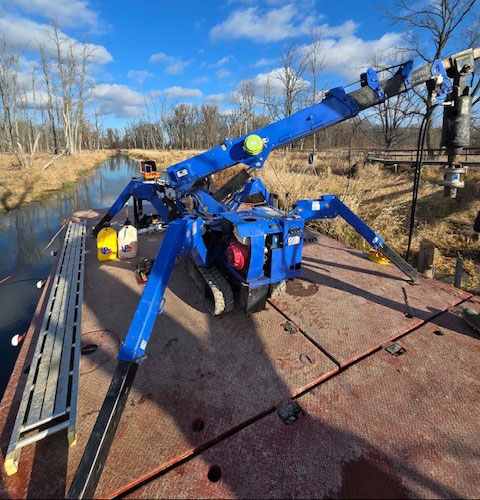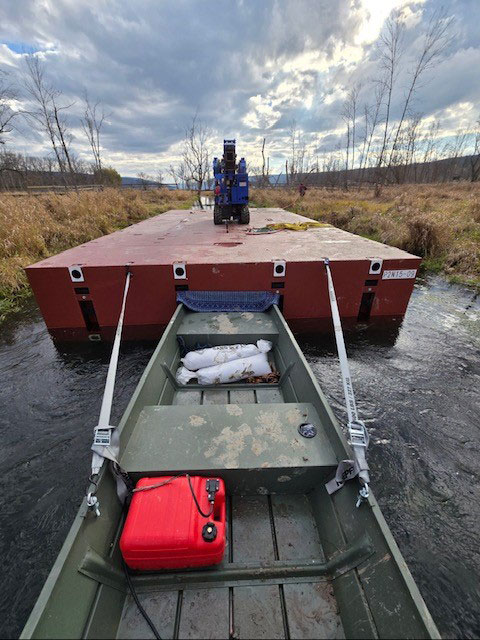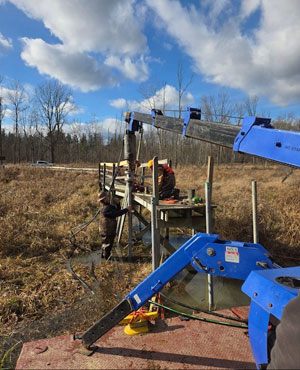According to its website, the Sandy Bottom Nature Trail System consists of four distinct trails on 54 acres that are contiguous with the original Sandy Bottom Park and have been incorporated into the park system. The trails meander through the wetland at the north end of Honeoye Lake in Honeoye, New York. All four park trails are very popular for hiking, bird watching, dog walking, winter cross-country skiing, and communing with nature in general. Two pedestrian bridges that cross Sandy Bottom creek were in disrepair and had to be demolished and replaced.
The Sandy Bottom pedestrian walkways presented numerous logistical challenges involving both access and mobilization. Helicals mitigated both issues and checked the environmental sensitivity box for both the site and the material itself. However, it was Trident Shoreline Environmental Services, with extensive experience working in challenging, sensitive environments, who carried the day with helicals playing a strong supporting role.
The North pedestrian bridge was more straightforward since it could be reached from the land utilizing crane mats and standard installation equipment. Both bridges’ final elevation were only 40 inches above the waterline further complicating the installation.
 It was the South pedestrian bridge that presented problems. The South site was 300 feet away and only accessible by water. The creek was shallow and only accessible by Trident’s “Flexi Float” or Skinny Ramp/Barge, which is a sectional barge allowing them to navigate the narrow creek in sections with reassembly at the installation site on the south side of the creek. This barge is one of Trident’s valuable tools in dealing with difficult access locations. Helicals are frequently installed from barges in marine environments. However, we have rarely seen anything as flexible and innovative as the Flexi Float.
It was the South pedestrian bridge that presented problems. The South site was 300 feet away and only accessible by water. The creek was shallow and only accessible by Trident’s “Flexi Float” or Skinny Ramp/Barge, which is a sectional barge allowing them to navigate the narrow creek in sections with reassembly at the installation site on the south side of the creek. This barge is one of Trident’s valuable tools in dealing with difficult access locations. Helicals are frequently installed from barges in marine environments. However, we have rarely seen anything as flexible and innovative as the Flexi Float.
Here are some other Case Histories in marine environments where helicals were installed from barges.
Mobilization for the South side involved a Spider Crane, powered by a hydraulic portable power pack to run the ALS. Both reach (15 feet minimum) and height were required as downward pressure was needed to get on top of the piles to penetrate the upper crust and reach the required embedment between 25’ and 35’.
Read Sandy Bottom Case History.
Trident is no stranger to working in remote terrain with environmental considerations (with or without helicals). Here are other Case Histories in which Trident did use helicals to overcome site challenges.
Over the years, helicals have proven to be very popular for foundation support for walkways. Many of the usual suspects, such as access, mobilization, and environmental sensitivity, are at issue. Trident Shoreline Environmental uses helicals and their specialized equipment to carve out a unique construction niche to mitigate difficult site issues in remote, environmentally sensitive locations.
Review Walkway Projects Which Utilized Helicals.






No comments yet.